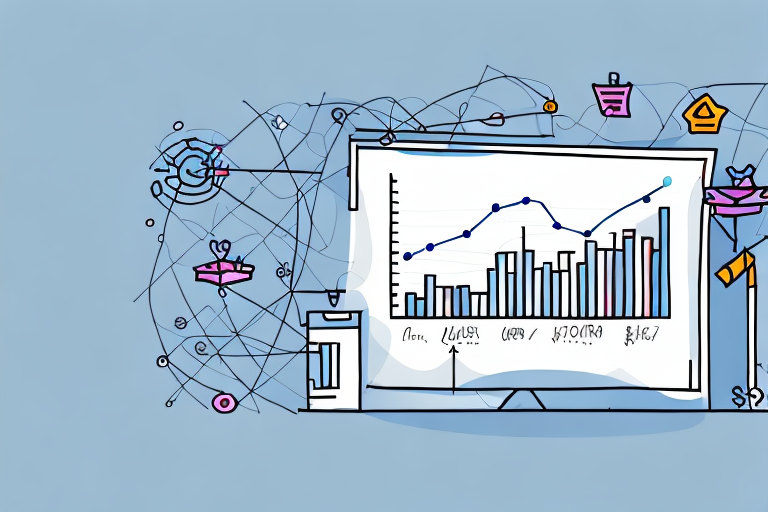Implementing Effective Dynamic Pricing Strategies
Pricing strategies are crucial for businesses to maintain profitability and boost sales. However, conventional pricing models may not be effective in today's dynamic market. To cope with changing market conditions and increasing competition, businesses are adopting dynamic pricing as a strategy to stay ahead. This article explores the various aspects of dynamic pricing, including its definition, advantages, best practices, common mistakes, case studies, and future trends to help you effectively implement dynamic pricing in your business.
Understanding Dynamic Pricing and Its Significance
Dynamic pricing is a strategy where businesses adjust their prices in real-time based on market demand, supply, and other external factors. This approach allows businesses to set higher prices when demand is high and lower prices when demand is low, maximizing profits while maintaining customer loyalty.
The significance of dynamic pricing in today's market lies in its ability to enable businesses to respond swiftly to changing market conditions. With the rise of e-commerce and mobile shopping, customers have access to numerous options, making it increasingly challenging for businesses to stay competitive. Dynamic pricing ensures that businesses can stay ahead, respond to shifts in market demand, and offer customers competitive prices.
Moreover, dynamic pricing aids in optimizing inventory management. By analyzing market trends and customer behavior, businesses can adjust prices to sell excess inventory or promote slow-moving products, reducing inventory costs and ensuring customers find the best deals.
The Evolution of Pricing Strategies
Traditional pricing models have evolved to accommodate the fast-paced changes in the market. While static pricing relies on fixed markups, dynamic pricing leverages real-time data to make informed pricing decisions, providing a more flexible and responsive approach.
Benefits of Dynamic Pricing for Businesses
- Increased Profits: Adjusting prices based on demand allows businesses to maximize profits and increase revenue.
- Enhanced Sales: Offering competitive prices attracts more customers, leading to increased sales.
- Improved Customer Loyalty: Competitive pricing helps maintain customer loyalty and attract new customers.
- Flexibility: The ability to respond quickly to market demand changes helps businesses stay ahead of the competition.
- Optimized Inventory Management: Adjusting prices based on demand helps manage inventory levels effectively, avoiding overstocking or understocking.
According to a study by McKinsey & Company, businesses that implement dynamic pricing strategies can see revenue increases of up to 25%.
For more insights on the impact of dynamic pricing, refer to the McKinsey & Company report on dynamic pricing.
Implementing Dynamic Pricing: Best Practices
To successfully implement dynamic pricing, businesses should follow these best practices:
- Monitor Market Demand: Continuously track market demand and adjust prices accordingly.
- Leverage Data Analytics: Use data analytics to gain insights into customer behavior and market trends.
- Segment Customers: Categorize customers based on purchasing habits and demographics to tailor pricing strategies.
- Personalize Pricing: Offer personalized prices based on individual customer history and preferences.
- Start Small: Begin with a small number of products or services and gradually expand dynamic pricing implementation.
It's essential to use dynamic pricing ethically, ensuring transparency with customers to maintain trust. Regularly review and adjust pricing strategies to keep them effective and relevant.
Utilizing Technology and Tools
Investing in the right tools and technologies is critical for successful dynamic pricing implementation. Tools that offer real-time data analytics, machine learning capabilities, and predictive analytics can significantly enhance pricing strategies.
Avoiding Common Mistakes in Dynamic Pricing
Implementing dynamic pricing can lead to success, but certain pitfalls should be avoided:
- Incorrect Pricing Levels: Setting prices too high or too low can result in lost profits or decreased sales.
- Ignoring External Factors: Failing to consider changes in the economy, competition, or other external factors can negatively impact pricing strategies.
- Poor Communication: Not informing customers about pricing changes can lead to confusion and mistrust.
- Lack of Monitoring: Not continuously monitoring and adjusting pricing strategies can result in missed opportunities for increased sales or revenue.
For further guidance on dynamic pricing pitfalls, refer to the Harvard Business Review on price elasticity.
Real-World Applications: Case Studies of Dynamic Pricing
Several businesses have successfully implemented dynamic pricing strategies, resulting in increased sales and higher profits. Here are some notable examples:
- Uber: Utilizes dynamic pricing, known as surge pricing, to adjust rates based on demand and supply, ensuring more drivers are available during peak times.
- Amazon: Employs dynamic pricing to adjust product prices based on customer behavior and market trends, enhancing sales and customer satisfaction.
- Southwest Airlines: Uses dynamic pricing to adjust fares based on demand and booking patterns, optimizing revenue and seat occupancy.
These case studies demonstrate the effectiveness of dynamic pricing in various industries, highlighting the importance of adaptability and data-driven decision-making.
Future Trends in Dynamic Pricing
The landscape of dynamic pricing is continually evolving with advancements in technology. Future trends include:
- Artificial Intelligence and Machine Learning: These technologies will enhance predictive analytics, allowing for more accurate pricing strategies.
- Integration with IoT: Internet of Things (IoT) devices can provide real-time data, further refining dynamic pricing models.
- Personalized Pricing: Increased focus on individual customer data will enable more personalized pricing, improving customer satisfaction and loyalty.
- Expansion into New Industries: Dynamic pricing will become more prevalent in industries such as hospitality, transportation, and retail.
For an in-depth look at future trends, refer to the Forbes article on the future of dynamic pricing.
Measuring the Success of Dynamic Pricing Strategies
To determine the effectiveness of dynamic pricing strategies, it's essential to measure key performance indicators (KPIs) such as:
- Sales Volume: Track changes in sales volume in response to pricing adjustments.
- Revenue Growth: Monitor revenue trends to assess the impact of dynamic pricing.
- Customer Satisfaction: Use surveys and feedback to gauge customer satisfaction related to pricing changes.
- Market Share: Analyze changes in market share to understand competitive positioning.
By regularly analyzing these metrics, businesses can refine their pricing strategies to better align with market conditions and customer expectations.
Tools for Tracking Performance
Utilize analytics platforms such as Google Analytics, Tableau, or proprietary business intelligence tools to track and visualize KPIs effectively.
Choosing the Right Tools and Technologies for Dynamic Pricing
Selecting appropriate tools and technologies is crucial for the success of dynamic pricing strategies. Businesses should consider the following when choosing tools:
- Real-Time Data Analytics: Tools should provide real-time insights into market trends and customer behavior.
- Machine Learning Capabilities: Advanced algorithms can enhance predictive pricing models.
- Predictive Analytics: Tools should offer predictive capabilities to forecast market demand and adjust pricing proactively.
- Seamless Integration: Ensure that the chosen tools integrate smoothly with existing systems and platforms.
Popular dynamic pricing tools include PROS, Pricefx, and Oracle Retail Pricing.
Addressing Customer Concerns with Transparency
One potential concern with dynamic pricing is the perception of price discrimination, which can lead to mistrust and decreased customer loyalty. To address these concerns, businesses must:
- Be Transparent: Clearly communicate pricing strategies and reasons for price changes to customers.
- Maintain Fairness: Ensure that pricing adjustments are fair and justified based on market conditions.
- Educate Customers: Provide information on how dynamic pricing benefits customers, such as offering better deals during low demand periods.
By maintaining transparency and fairness, businesses can build and sustain customer trust while implementing dynamic pricing strategies.
Overcoming Resistance to Dynamic Pricing
Introducing a new pricing strategy can face resistance from both employees and customers. To overcome this challenge:
- Communicate Benefits: Clearly articulate the benefits of dynamic pricing to stakeholders.
- Provide Training: Offer training and support to employees to help them understand and implement dynamic pricing effectively.
- Engage Customers: Involve customers in the transition by explaining how dynamic pricing enhances their purchasing experience.
Addressing concerns proactively and fostering a culture of adaptability can facilitate the successful adoption of dynamic pricing strategies.
Balancing Profitability and Customer Loyalty
The key to successful dynamic pricing lies in striking the right balance between maximizing profitability and maintaining customer loyalty. Businesses must:
- Monitor Customer Perception: Regularly assess how customers perceive pricing changes and adjust strategies accordingly.
- Ensure Value: Maintain a strong value proposition to justify price adjustments.
- Provide Consistent Communication: Keep customers informed about pricing strategies and any changes that may affect them.
By balancing profitability with customer satisfaction, businesses can implement dynamic pricing strategies that drive growth while fostering long-term customer relationships.
Conclusion
Dynamic pricing is an effective strategy for businesses aiming to stay competitive in today's fast-paced market. By understanding customer behavior, leveraging big data analytics, and adopting best practices, businesses can implement dynamic pricing strategies that maximize profitability while maintaining customer loyalty. With advancements in technology and the growing importance of data-driven decision-making, dynamic pricing is set to play an increasingly significant role across various industries. By thoughtfully implementing and continuously refining these strategies, businesses can stay ahead of the competition and achieve sustained growth.




















